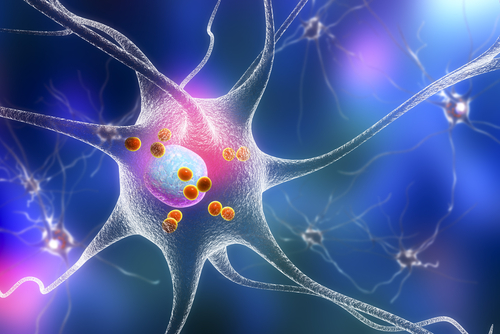#AAN2018 – Neural Stem Cell-Based Therapy is Safe, May Benefit Patients, Early Test Results Suggest

Human neural stem cells show promise as therapy for Parkinson’s disease, according to six-month interim results of Phase 1 trial.
The therapy’s developer, International Stem Cell’s Corporation subsidiary Cyto Therapeutics, will present the results at the American Academy of Neurology annual meeting in Los Angeles, April 21-27. Parkinson’s News Today will be covering the conference.
The presentation, taking place during the Scientific Platform Sessions, will be at 5:40 p.m. Pacific time on Tuesday, April 24. The title will be “Interim Clinical Assessment of a Neural Stem Cell Based Therapy for Parkinson’s Disease.”
Human parthenogenetic neural stem cells (ISC-hpNSC) is a cellular therapeutic that can not only differentiate into dopaminergic neurons, but can also release brain-protecting agents, offering a new approach to treat Parkinson’s disease.
According to the company, a one-time transplant of ISC-hpNSC into the brain of Parkinson’s patients, replaces the dead and dying dopaminergic neurons and can offers protection to the remaining neurons, alleviating disease symptoms and preventing further deterioration.
Preclinical studies have shown that administration of ISC-hpNSC is safe and can improve motor symptoms, increase dopamine levels, innervation and number of dopaminergic neurons in Parkinson’s animal models.
The Phase 1 trial (NCT02452723), currently recruiting participants, is an open label, single-arm study evaluating the safety, tolerability and preliminary effectiveness of transplanting ISC-hpNSC into Parkinson’s patients.
A total of 12 patients are divided into three groups, each injected with 30, 50 or 70 million of the company’s ISC-hpNSC, respectively. Cells are injected directly into the striatum and substantia nigra regions of the brain, regions known to be directly affected in Parkinson’s disease.
Patients will be evaluated for 12 months with a five-year, long-term follow-up. The study’s primary objective is to assess the therapy’s safety by measuring the incidence of treatment-related adverse events.
Additionally, researchers will evaluate potential effectiveness by assessing how the therapy affects patients’ scores on the Unified Parkinson Disease Rating Scale (UPDRS), which measures course of disease, after 12 months and compared it to baseline.
“Four patients of the first cohort and 2 patients of the second cohort have been successfully transplanted with 30 and 50 million ISC-hpNSC cells respectively,” researchers wrote.
Results from a six-months analysis after cell transplantation revealed that the therapy, in general, is safe, with no signs for induced dyskinesia (impairment of voluntary movement), tumors, infection or other serious adverse events reported so far.
Also, patients in the group injected with the lower number of human neural stem cells, 30 million, showed a median 53% improvement in the Questionnaire for Impulsive-Compulsive Disorders, and an average increase of 35% in the Beck Depression Inventory, and 16% in the Parkinson’s Disease Quality of Life Score-39 (PDQ-39).
Importantly, the therapy resulted in a 25 percent reduction in patients’ off time — the period when levodopa therapy begins to fail and Parkinson’s symptoms return.
“Interim results of the world’s first pluripotent stem cell based therapy for PD show that transplantation of ISC-hpNSC is safe, well tolerated and can potentially benefit patients,” researchers wrote.
The study is ongoing at The Royal Melbourne Hospital, Australia.






